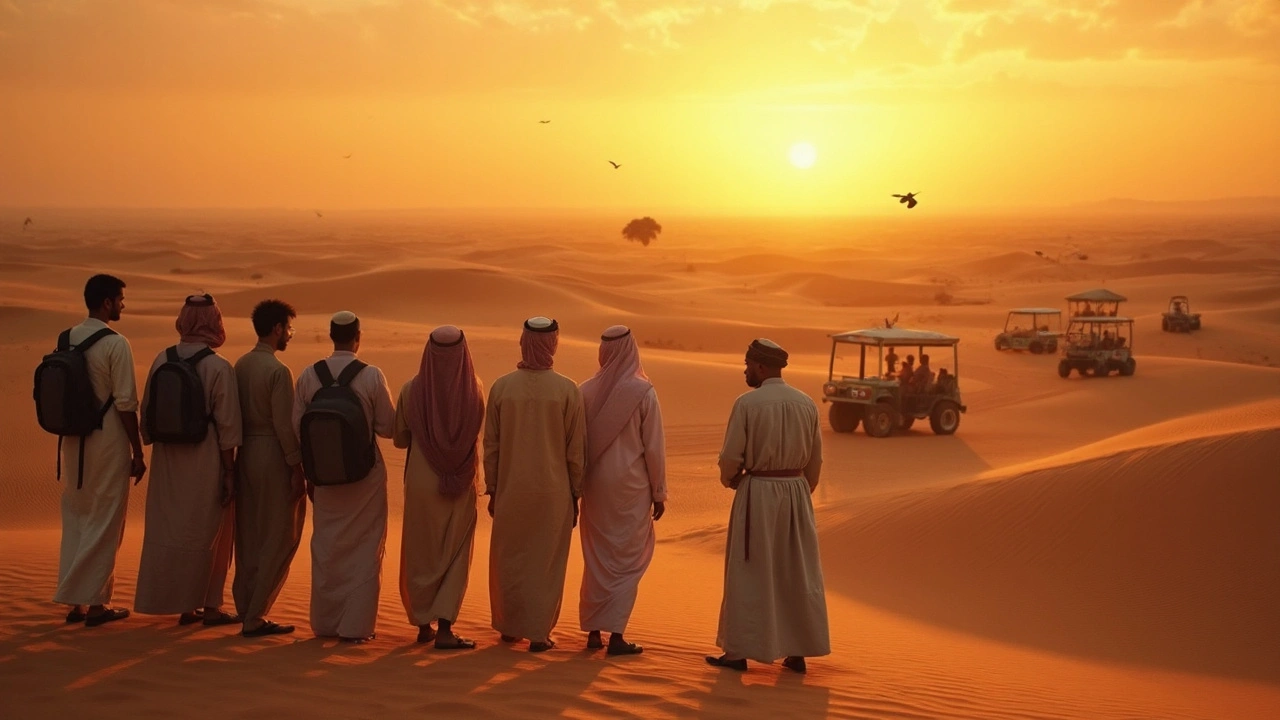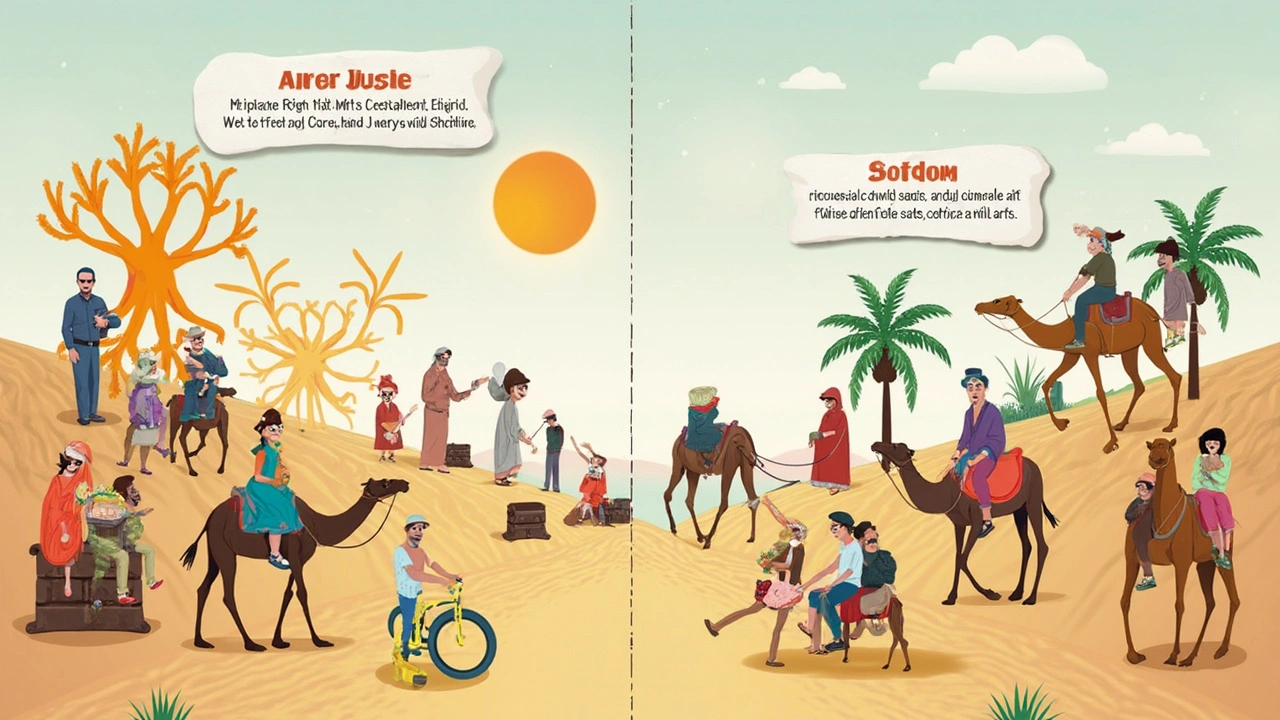Desert Safari Dubai Myths Debunked: Real Facts & Local Tips for Thrilling Adventure

Ever heard the one about camels being the only way to explore the desert? That’s just one of the many wild tales circling the famous desert safari scene in Dubai. Whether you’re a long-time resident, a new expat, or a tourist, if you haven’t had at least one experience of the golden sands, someone’s probably convinced you of a few myths. The thing is, with the amount of buzz around desert adventure tours, it’s easy to believe the hype. But so much of what’s said just doesn’t hold up in the real, breathtaking world outside the city.
Common Misconceptions About Dubai’s Desert Safaris
It’s amazing, really, how many myths float around about desert safari dubai experiences. Let’s pull apart the big ones and shed real light on what you can expect.
First off, many people assume a desert safari in Dubai is always unbearably hot. Sure, Dubai is famous for its record-breaking summer highs, but the desert has moods and seasons of its own. If you hit the dunes in winter—from November through March—the temperature is mild, and sometimes you’ll need a light jacket in the evening. Even sunset and sunrise safaris in peak summer bring surprisingly tolerable breezes.
Another classic: safaris are only about daredevil dune bashing. Yes, the exhilarating rush of a Land Cruiser swinging over sand mountains is a staple, but modern tours serve up so much variety. Want a gentle pace? There are serene camel rides, horseback journeys, and even “fat biking” options. The cooler, eco-friendly desert camps at places like Al Marmoom or Platinum Heritage keep it luxe and low-impact. You can focus on nature walks, falconry, or Bedouin-style storytelling, far from the roar of engines.
Some folks think desert wildlife is a myth, too. But step out early enough, and you’ll catch a glimpse of Arabian oryx, gazelles, and even the shy sand fox. Tour operators who focus on conservation—like Arabian Adventures or Sonara Camp—bring the magic to curious visitors through guided walks and private reserves out past Al Maha. You might be surprised how alive the desert gets before the crowds arrive.
A lot of expats, fresh off flights from milder climates, arrive convinced that sandstorms will crash their desert dreams. While sandstorms do occasionally occur, your tour guide will keep close tabs on weather updates from the Dubai Meteorological Office. Cancellations or delays happen only if visibility is really low, and tour companies will reschedule or refund with minimal fuss—so your big adventure is in safe hands.
It’s also common to worry about getting “lost” or stranded in the dunes. Dubai’s desert tour operators must follow strict safety protocols, with GPS tracking, certified guides, and emergency communications. Licensed companies out of Dubai—think Arabian Adventures, Desert Safari Dubai, or Platinum Heritage—train their drivers rigorously and send out recovery support for every excursion. Guests are briefed before setting off, and guides are certified in first aid.
What about food? Some still expect bland, ‘touristy’ set menus during the Bedouin camp dinner. But these days, quality and authenticity are a huge point of pride: many operators now offer everything from live-grilled kebabs and mezze spreads to Emirati dishes like harees and luqaimat sweets at camps inspired by Al Marmoom, Bab Al Shams, or Al Maha. Guests with allergies, vegans, and vegetarians are regularly catered for—just let your host know in advance.
Price tags are a talking point, too. Rumor has it: only tourists splurge on desert trips, and they’re all overpriced. The truth isn’t so simple. Group options start from as low as AED 100 per person, especially outside the peak season, while private or tailored luxury safaris run up to AED 2,000 and beyond. Expats and UAE nationals often head out with family and friends, splitting costs for a private car or even bringing their own gear for a real DIY adventure (with proper permits, of course). Dubai's desert is for everyone, not just big spenders.

Dubai Desert Safari Culture: What’s Real, What’s Not
Turning to local customs, culture, and etiquette, a heap of legends need busting, especially if you want to experience the desert beyond just photo ops.
There’s a persistent idea that you need to dress ‘like a tourist’ in the desert. Actually, light, loose-fitting long sleeves and trousers work best to protect from sun and sand—think practicality. Local etiquette does matter: even while on a far-flung dune, respecting modesty reflects well and helps you blend into traditional camp settings. Leave the beachwear for JBR, and choose airy fabrics in earth tones. Even some of Dubai’s more upscale operators, like Platinum Heritage, recommend scarves or sheilas to shield against wind.
A lot of first-timers expect no trace of local heritage on mainstream tours. This couldn’t be farther from reality: Emirati hospitality drives the whole experience, especially when you visit locally owned camps. Coffee, dates, and a warm welcome set the tone in traditional majlis tents. Emirati guides will happily answer questions about falconry (the UAE’s favorite national sport!), local farming, or camel breeding, especially if you join hands-on cultural shows or workshops. Try your hand at Arabic calligraphy, henna painting, or the regional tanoura dance. Real Bedouin traditions aren’t just for show here—they’re woven into most tours worth your time.
Thinking the desert is just “empty” couldn’t be more wrong. The Dubai desert supports rich flora and fauna—wild acacia trees, desert lilies, and the rare Ghaf tree, which was named the UAE’s national tree in 2008. Some camps have in-house conservationists who’ll walk you through ancient traditions of survival and explain how native species cope with scorching summers. You might spot the mesmerising dance of desert reptiles or hear about conservation areas like Al Marmoom Desert Conservation Reserve, a project supervised by Dubai Municipality.
Certain stereotypes say that desert safaris are always noisy, wild, and crowded. That’s only true for some operators at peak times. Want privacy and serenity? Choose a sunrise or weekday sunset tour, or book a camp that caps guest numbers—think Sonara Camp or the secluded eco-lodges out by Lahbab. Many companies offer exclusive setups for couples, families, or corporate groups craving quiet stargazing. Dubai’s night skies west of Al Marmoom dazzle with clarity, since city light pollution doesn’t reach that far. Bonfires, acoustic music, and traditional Bedouin cuisine under the stars beat any nightclub in the city.
One more cultural angle: many believe alcohol is never served. In fact, licensed desert camps (Bab Al Shams, Sonara Camp, and some private events) do serve drinks, but rules are strict. Don’t expect a wild party; think classy sundowners with that jaw-dropping sunset as your backdrop. Major public holidays, especially Ramadan, mean dry events. Water, juices, and endless Arabic coffee, though, flow nonstop at every meal.
Some travelers ask if women and children are truly safe. Local law and hospitality put family first. Women-only tours are on the rise, with experienced female Emirati or expat guides, and camps routinely offer family-friendly activities, from sandboarding to stargazing. Respectful, discrete behavior is the norm; harassment or inappropriate actions are simply not tolerated by reputable providers.
If you’re thinking you can’t take stunning photos without splurging on a pro photographer, know that early morning light and golden hour at sunset are nature’s filters in the Dubai desert. Bring your own camera or phone, and ask your guide for the best sand-crest shots—the guides know the angles for those iconic Insta moments. Even little-known eastern desert spots near Hatta or Fossil Rock offer backdrops worthy of a magazine cover.

Insider Tips for the Ultimate Dubai Desert Adventure
If you’re ready to break the mould and experience a desert safari in Dubai the way locals, long-term expats, and in-the-know travelers do, here’s what you need to know.
Timing is everything. For comfort and jaw-dropping views, book your safari outside the peak midday heat. Winter months (November to March) make any time of day enjoyable, and sunrise or sunset tours feel extra magical. During summer, most tours start late afternoon or early evening. Need a pro tip? Book a weekday evening to dodge the crowds—tourists tend to pack in on weekends.
Safety is serious business. Only use licensed tour providers; all reputable operators display their DTCM (Dubai’s Department of Tourism & Commerce Marketing) license on their website and sign-up forms. Certified drivers, GPS-tracked vehicles, and onsite emergency response come as standard. If you plan a self-drive adventure (yes, locals love to do this!), share your location, bring a well-stocked recovery kit, and drive only on marked routes—straying onto private land or rare wildlife reserves carries heavy fines.
Dress for the desert, not the mall. Wear closed shoes, sunglasses, a hat, and sunscreen—sand burns don’t make for a fun souvenir. Light scarves help against wind-blown sand. Leave expensive handbags and jewelry at home; fine dust gets everywhere, and you’ll treasure your phone or camera more when it’s easily accessible for photos.
How about an ethical edge? Pick companies that promote conservation—they keep the dunes clean and educate guests about local ecology. Operators working in partnership with Dubai Municipality or at Al Marmoom usually have clear environmental policies, limit plastic use, and support animal welfare. Say no to rides or shows that exploit animals, and avoid littering—no one wants to find a plastic bottle half-buried in the ancient sands.
If you’re a foodie, don’t rush. Sample at least one Emirati specialty—like camel milk ice cream or luqaimat drizzled with date syrup. Check reviews, and ask about menu options if you have dietary restrictions—vegetarian or vegan food is increasingly standard at top camps.
For thrill-seekers, try something new. Book an adrenaline-packed quad bike session, or soar down sand dunes on a real board (think snowboarding, but much warmer). Adventurers with more time should plan a staycation at a desert resort—Resorts like Bab Al Shams and Al Maha let you watch gazelles over breakfast or dip in their infinity pools before hitting the dunes at sunset.
Families get special treatment, too. Many safaris offer kids’ activities: face painting, sandcastle building, and falcon shows. Camel rides are gentle and safe for little ones, and most camps have shaded space for babies or toddlers if the sun gets too much.
Got tech on the brain? Some camps now offer Wi-Fi—yes, you can send your dune selfie straight to your friends in London or Mumbai—but it’s worth unplugging and soaking in the silence, if only for an hour. Stargazing apps come into their own here: the skies above Dubai’s conservation reserves are famous for clear constellations.
Above all, bring curiosity and respect. The people who keep Dubai’s desert safaris running—guides, drivers, cooks, storytellers—carry deep knowledge and lived experience. Chat with them, ask questions, and listen to their stories of how the land has changed over the decades. From old Bedouin survival hacks to the secrets behind the perfect cup of gahwa (Arabic coffee), you’ll come home with more than souvenir sand in your shoes.
Myths or not, the Dubai desert is waiting. And now you know the real story, there’s every reason to say yes to the adventure—just don’t be surprised if those legends start sounding even taller after you’ve seen the real thing.